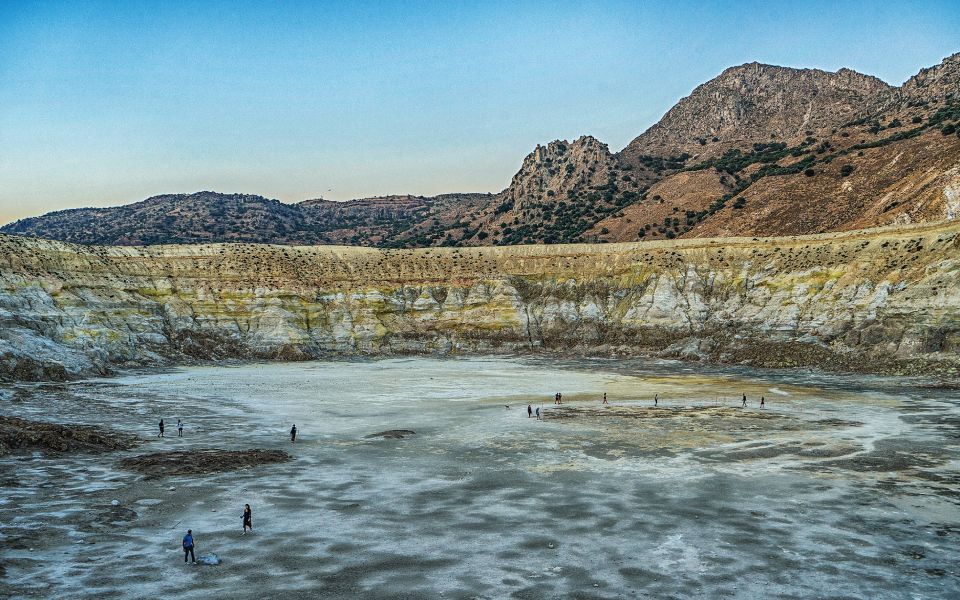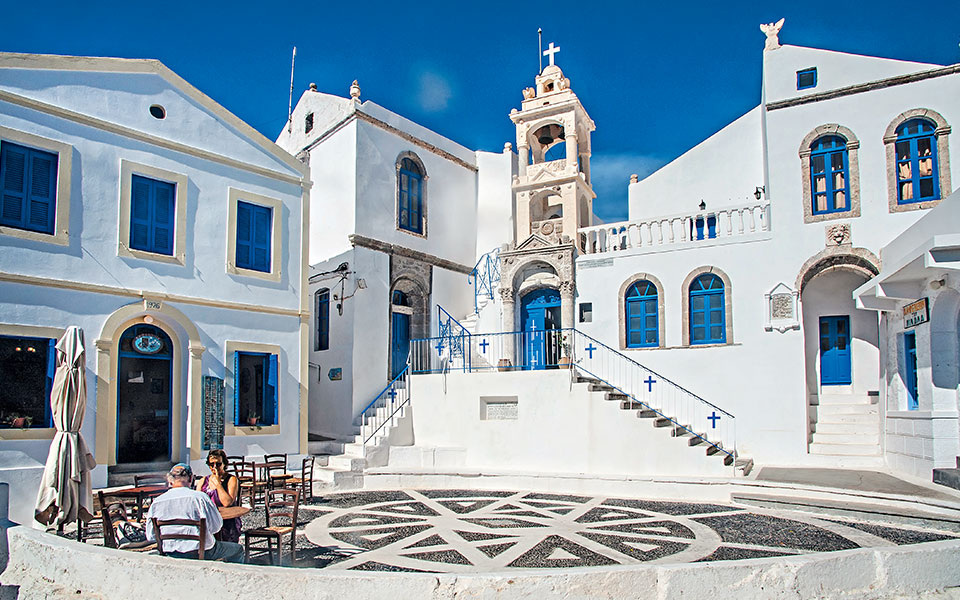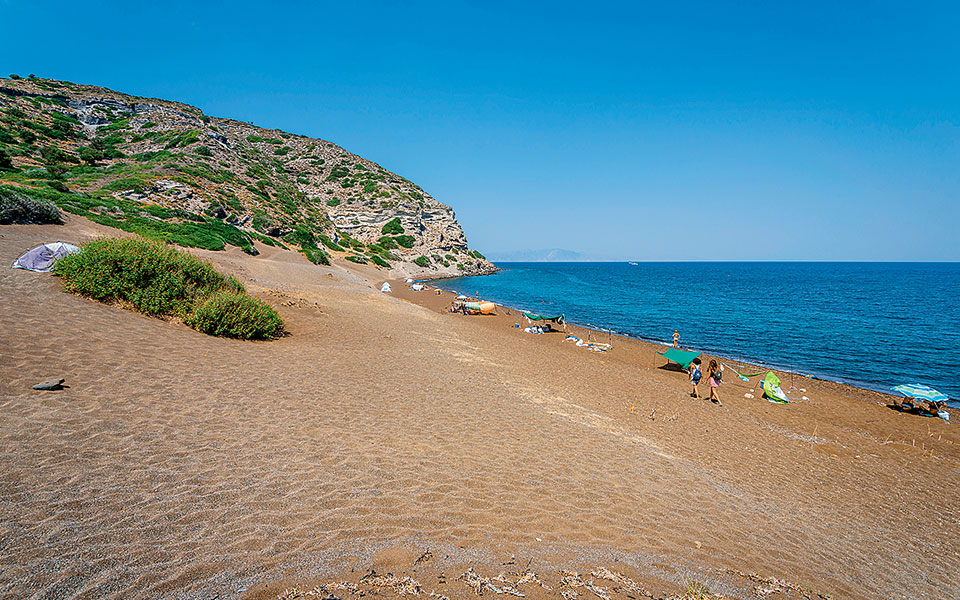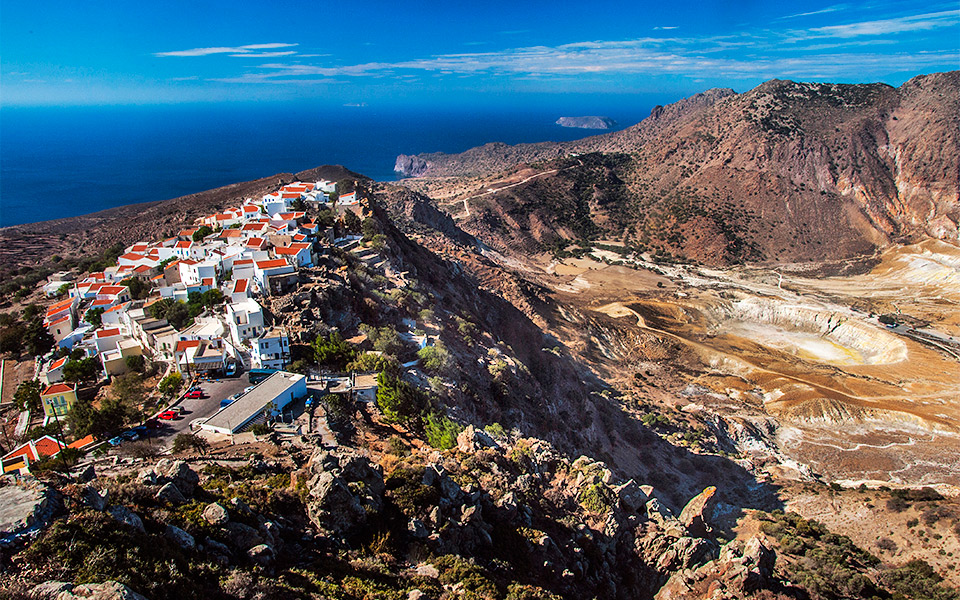I turned right at the last fork and, although I knew where I was headed as I made my way downhill, I was still stunned by the lunar-like landscape before me. A world-class sight, the Nisyros volcano is the kind of place that could receive thousands of visitors every day. But because it is tucked away in one of the farthest-flung corners of Greece, on a small island with no airport and only infrequent ferry service, it was just me and a handful of other visitors – I had an entire volcano almost all to myself.
Picking my way carefully among the rocks and fissures and making my way around the edge of holes spewing hot steam, I admired the perfect circle of the Stefanos crater. Later, from my table at Balkoni (Balcony) – the only taverna on the island with a view of the caldera – in the ghost town of Emporio, I took one last photograph of the Polyvotis crater while nibbling on chunks of pork cooked in pork fat and sipping on tsipouro, the local spirit.

© Marika Tsouderou
I soon had company. “You’ll need sturdy shoes, water and a hat, because the sun isn’t joking around right now,” I told a group of Danish tourists who expressed their desire to walk every one of Nisyros’ 40 trails. There may not be much in way of shade here, but this island is a paradise for trekkers, as well as for those dreaming of crystalline seas without the horror of sun loungers, umbrellas and crowds.
The early afternoon found me in Nikia, sipping coffee in the tiny but charming village square whose picture graces so many tributes to the island. The Museum of Volcanology, located at the entrance to the village, let me in on the secrets of Hephaestus. After the museum, I found a room for rent in a stately two-story house of the type known locally as a “Captain’s house”. I had a quick shower to wash off the dust and sweat, and headed out to the old Pantelidis Baths and what I’d heard was an afternoon ritual of impromptu parties attended by artists and other alternative types, some brandishing guitars or other instruments, all feeding on tons of delicious meze while the smells of the healing water bubbled up, hot and miraculous, from the bowels of the Earth.

© Clairy Moustafellou
Evening fell and I watched as, in the distance, the lights went on in Mandraki, the capital of the island. I headed there next. Mandraki is a town, nestled beneath ancient walls, that thrives year round without the help of mass tourism. The Monastery of Panaghia Spiliani, perched on the edge of a steep cliff, shone above me as I enjoyed a dinner of fresh fish in the moonlight at Vengos on Ilikiomenis Square, just a few steps from Andriko’s kafeneio. For dessert, I was treated to some fresh melon accompanied by homemade cinnamon liqueur.

© Shutterstock
The following morning, I had just come out of the sea at Lies Beach, near where the donkeys graze, when I heard a group of friends beside me discussing their itinerary for the next few days. “We should go swimming at that old pirate’s bay, Avlaki, tomorrow,” said one of them. Another countered: “Or we can have a swim at Chochlakous; I love how the big black pebbles make music when they’re washed by the waves.”
“Or we could just set up camp at Pachia Ammos and spend the night singing around the campfire,” said the third.
On Nisyros, the land itself has breath and voice. Only the initiated can hear it clearly, but after a couple of days even my untrained ears started understanding its welcoming rumbling. “I respect you because you respect me,” the island seemed to be whispering.












